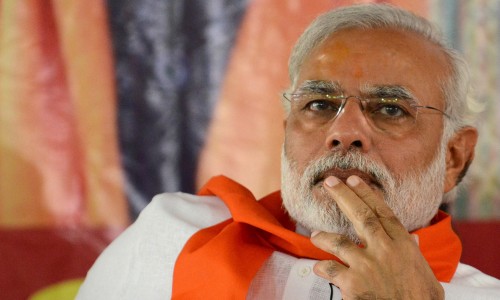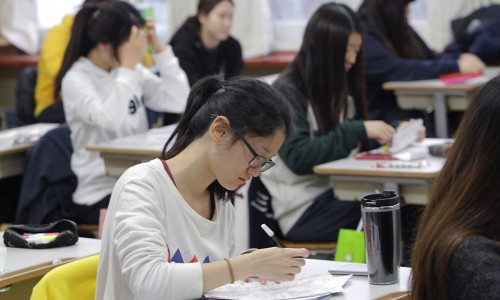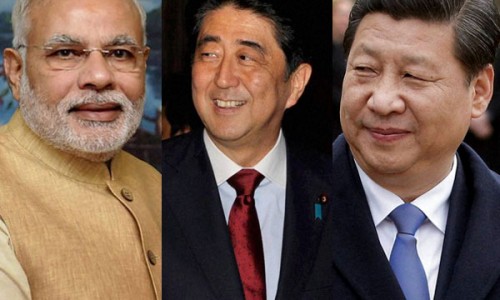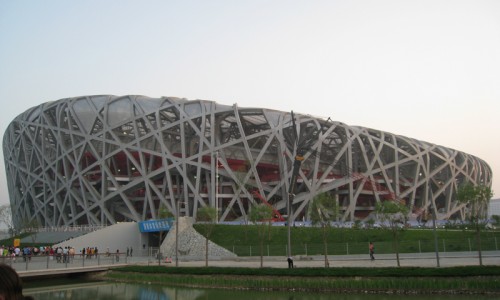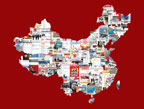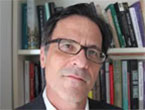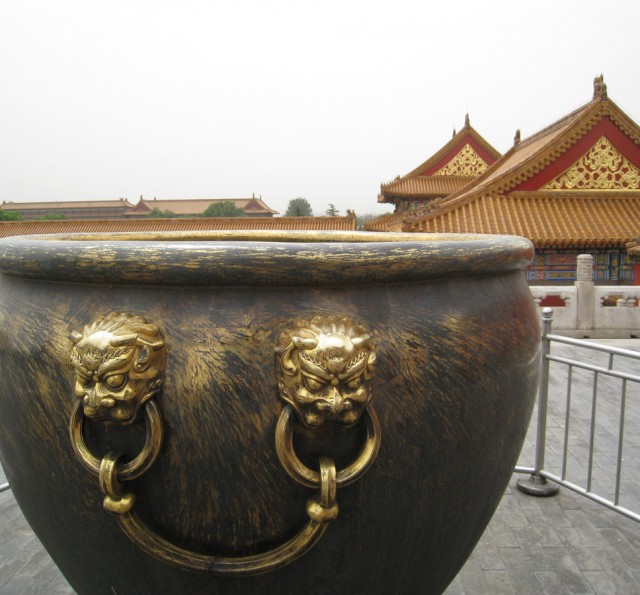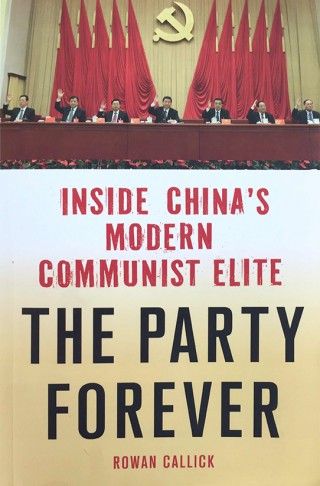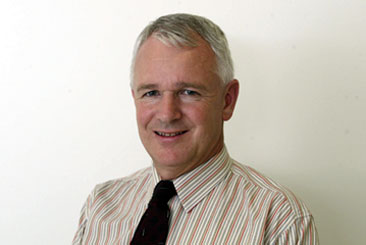Published on 2010
Is your perception of Asia a cuisine, a political culture, an aesthetic style, an economy?
“Asia” is actually a Western concept, and people who live in “Asia” don’t readily identify themselves as such, except over and against folk from other parts of the world. They view themselves as Japanese, as Thai, as Mongolian, as Vietnamese. And of course, Asia is far more diverse culturally, religiously, politically, socially than any other region in the world.
In Britain, they understand Asians principally to mean people from Pakistan and India. Probably here, it might be recognised most commonly as referring to people from south east and east Asia.
Life isn’t – and conferences like this aren’t – meant to be simple.
But there is value in using such shorthand, in order to help us, Australians, measure our relationship with our neighbours. And what is Asialink linking with except of course… Asia.
20 years ago, a lively debate emerged in Australia about whether we were an “Asian” country or not. On the whole, conservatives followed the lead of John Howard in arguing that we shouldn’t have to choose between our history and our geography, that we both were and weren’t. While those more on the left tended to stress Australia’s “Asian-ness.”
Much of the edginess of the debate hung up on the concept of “Asian values” and an “Asian way” – as pre-emptively defined for the rest of the region by Lee Kuan Yew and his eager ethical acolyte and regional political adversary Mohammad Mahathir. They claimed that this Asian way comprised a version of authoritarian capitalism infused with a very partial version of Confucianism. Fortunately this project has since slowly collapsed like an air cushion with the stopper out, although a few latter day advocates like Singaporean Kishore Mahbubani still flail around with it.
Within Australia, the brief Pauline Hanson phenomenon followed, but then she sank first into failure even as a celebrity dancer, and now worse, she’s a migrant to Britain. The Asianists effectively won, and we can almost say, “we’re all Asians now.” No one seems to cavil when I write about the Asia-Pacific as “our” region (and please forgive me; I do like to bring the Pacific in to this equation). When Australia’s soccer team shifted in to the Asian league, I can’t recall anyone saying “but we’re not Asian.”
Eighteen months ago, I travelled to New Delhi for a dialogue between Indian thinktanks and Asialink based at Melbourne Uni. Our “team” included an Australian then living in Beijing – myself – and several people from south-east Asia with strong Australian connections. This surprised and pleased our Indian hosts, who had not yet themselves developed as strong “Asian” networks.
So what has this process involved, this steady defusion of the concept of “Asia” as a challenge, and a characteristically unsystematic Aussie embrace of it as a term that now includes us? At the same time, we don’t yet tend to view ourselves as “AsiaN.” But that is starting to matter less and less, as we rapidly become a more ethnically diverse nation anyway, and one which is being accepted into the important regional groupings. We have a 13 year old son who was born a Hong Kong Chinese; he identifies more strongly as an Aussie than does our older blonde daughter who speaks reasonably good Chinese and loved our stay in Beijing. Which of them is more “Asian”?
The perceptions that shaped our country a century ago at its birth, were caught up in the widespread racial anxiety in Western nations about the spilling over of a collapsing China. Right through to the downfall of the Soviet Union, we were subject to a residual security-driven fear of an Asian form of communism thrusting south. Our most recent Defence White Paper obliquely expressed concern about the rapidity and opacity of China’s military modernisation.
Such strategic issues continue to shape some perceptions. But if you’re a security analayst or a defence expert, your career depends on identifying threats.
Travel also shapes perceptions – though mostly in the opposite, positive way. Australians have always been indefatigable travellers, and they tend to find things to like about places they visit. Thus the love of Bali, and the refusal to blame Indonesia for the terrorist bombings there; thus Fiji in the top few places in Lowy Institute polls, despite the military coup of 2006.
I fear that our educational institutions are failing to keep up. Our schools include little about Asia in their curricula. Universities’ expertise on Asia has been shrinking. And most critically, Asian language skills are rapidly declining. In 2008, just 240 students from a non Chinese background studied Chinese in year 12, in the whole country.
Despite the healthy figures in our trade with Asia, our business connections remain aloof. Apart from Mike Smith at ANZ – whose company has by no coincidence one of the few cohesive strategies for Asian engagement – we have almost zero chief executives or managing directors of our top 100 companies, or even board members, who have lived and worked in Asia. They employ Asia managers, but they give briefings and then are almost invariably out of the room when key decisions, say about investment, are made. Business may like the idea of Asia, but in my view largely doesn’t really get it. Nevertheless, in recent years our business media have learned reasonably quickly about how Asia – meaning chiefly China – works. Thus it was impressive to see how quickly iron ore billionaire Clive Palmer got done over a few weeks back, when he set up a very spurious claim about a deal with a Chinese partner.
Compared with many countries, and because we are comparatively so small and economically open, yet have such massive savings, we have become reasonably financially literate. This has provided a crucial element in our increasingly positive perception of our neighbourhood. Many realise that China and Japan alternate as the number one buyer of Australian goods, with South Korea number three. This is reinforced by the number of Australians – especially young Australians – who are accelerating their experience (and their earnings) by working as accountants in Kuala Lumpur, say, or as lawyers in Shanghai. They are learning the best way, by living there, about Asia. And large numbers of Australians gain from the ripple effects, by visiting them, or even by being related to them.
Our elite arts are increasingly strongly enmeshed with Asia. Through the patronage of organisations like Asialink, and through personal networks and experience, and indeed aesthetic taste, our fine artists have – led by the wonderful example of Ian Fairweather – provided us with cross-cultural experiences often more successful than fusion cuisine has been. A friend of mine, the Sydney based artist Tony Twigg, one of Ray Hughes’ stable, spends half of every year living and working in the Philippines and Malaysia. Peter Sculthorpe and Anne Boyd are among those composers who have consistently introduced Asian themes into their music. Christopher Koch and Nicholas Jose are the most important of the Australian writers whose work is focused on Asia. Some wonderful films made by Australians have been set in Asia – for example Phillip Noyce’s The Quiet American, shot of course in Vietnam. And Bruce Beresford’s bio-pic about Australia’s highest paid inspirational speaker, the former dancer and stockbroker Li Cunxin, “Mao’s Last Dancer,” has become one of the highest earning Australian films. All of the above cumulatively play a role in shaping our perceptions, naturally.
Our film distributors believe, however, that moviegoers don’t like or maybe can’t read subtitles. So short of excruciating dubbing, we don’t hear – or thus see – many Asian people on our movie screens. The most brilliant film made so far by the Taiwanese master director Ang Lee – Lust Caution, set in Hong Kong and Shanghai in the 1930s – failed to get a general release here despite the Western accolades and the Oscars won for much inferior works like Brokeback Mountain.
And what of the media? The input of the “new media,” chiefly the internet, is modest at best. Because the English language content of this media tends to be dominated from North America and Europe. Their reference points are chiefly domestic. And as this medium settles down, it is also becoming clear that much of the blogging, and the responses to blogs, is coming from older, more conservative sections of the community whose experience of and interest in the neighbourhood is modest, and most prone to be critical. The responses on our own newspaper’s web site to stories I’ve written, by people who read them online, are routinely, depressingly xenophobe.
Our Australian mass media diverge greatly in the extent to which they influence a perception of Asia. The commercial TV and radio stations that most Australians watch and listen to, do so, chiefly to the extent that they tend to ignore the region except during disasters. They do not employ journalists to cover Asia, and action footage is often difficult to obtain. The English language shows that they buy in, come from the US or Britain; their reference points mostly ignore Asia altogether. The people, events and places that preoccupy comedians or actors or singers or other so-called “celebrities” in our mass media, are also in the US and Britain. So in a way, the world we view through these popular media tends to be stuck in a time warp; it’s as if the US and Britain are still the dominant economic and cultural forces in the universe, which of course they no longer are.
The picture is different when it comes to some of our more serious newspapers and public radio and TV. The ABC has quite a network of excellent reporters around Asia, in addition to the good work being done for a different audience by Bruce Dover’s Australian Network. Naturally – it is part of its mission – SBS gives a strong priority to news from and about the region. The Fairfax newspapers have correspondents in Beijing, Jakarta and New Delhi, though sadly our chief competitor, the AFR, which once had nine foreign correspondents, now has just two, Washington and China – oddly, in Shanghai. My paper, the Australian, has full time staff journalists in Beijing, Jakarta, New Delhi and Tokyo – as well as employing me to write from the home base about regional issues and stories. When I was China correspondent – until the start of this year – my friends from media in Europe or North America were envious about the space and the prominence we gave and still give to China stories, not just in the world and business sections but in all parts of the paper. Most of those other Western media are actually winding back their Asian coverage for cost reasons, even as Asia is taking centre stage economically and in time I suspect politically too.
One answer to the cost question, is to dispel with correspondents sent from the home base and to use copy from locally hired freelances – say, a student who goes to Beijing to teach English as a foreign language, then wants to hang around and looks for journalistic work. One inevitable result of this trend is that, while such people may have reasonable insights into local culture, they have mostly not had any journalistic training or experience, and more importantly, have as their top priority being able to stay just where they are. This means, in the case of China, for instance, writing positively as a “friend” of Chjina.
We have accumulated, through our deployment of journalists in Asia, an amount of expertise. But most of that vanishes swiftly on return. Writing on international affairs is not, in general terms, a recipe for success, or even for employment, in Australian media. As in business more broadly, few journalists with Asian experience achieve the top jobs. My friend Mark Baker has come near as damnit at The Age, our own Nick Cater is editor of the Weekend Australian, in an earlier era Jeff Penberthy, Frank Devine and Max Suich, all Japan hands, reached the top. But the flow is diminishing. And as in business, the record of Australians is better within Asia itself, with Barry Wain having edited the Asian Wall Street journal, and my mate David Lague now running the South China Morning Post. And Robert Thomson, a China hand formerly of The Age and the FT, is now Rupert’s editorial right hand, editor of the Journal. My experience of Asia-knowledge in Australian media includes… when in PNG, cover earthquake in Irian Jaya. And the murder of the mother of the Chinese giel names as Pumpkin, grandparents live in Hubei, named Liu.
Our mass media still rely, for sound reasons, on their concepts of the angle and of the story to attract audiences. This naturally makes it hard to convey the essence of what is happening in a society, a community, in Asia – which often takes place through a drawn-out process rather than through a dramatic incident. It can also be a challenge, to convince editorial decision maker that our audiences might be interested in Asia for its own sake, without requiring an Australian angle. I was relieved when covering the awful Sichuan earthquake of two years ago, never to have been asked even to investigate as to whether there were any Australian victim. 80,000 Chinese victims was deemed sufficient. It was great, generally, being in China at a time – which persists – when anything Chinese aroused intrigue. It is instead frustrating to arouse interest in stories equally important in Indonesia say or Korea.
Our own Asian communities are naturally being influenced by media from home, and by media in Asian languages available here. This was especially palpable in building the hostile response within the Chinese community to the visit of Uighur leader Rebiya Kadeer last August, and in 2008 to the demonstrations surrounding the Olympic torch relay. This has also played a role in the Indian students’ campaign over crime in Melbourne and Sydney. Thus they have an impact, but this is not yet capable of flowing into the broader mainstream Australian community – although this is the strong aim of the propaganda department of the Chinese communist party, which is channelling billions of dollars into CCTV, Xinhua and other vehicles in an attempt to establish media with a global influence.
But the Asian media outside China, Japan and India employ very few journalists overseas. The Asian take on the rest of the world, including Australia, thus depends heavily on travel and on TV and movie shows made there.
People’s perceptions of Australia thus range hugely of course. In China, the initial response is often “ah, dai shu” – pocket mouse – meaning kangaroo. Our fauna, featured on countless wildlife TV programmes, are our best known feature by miles.
Growing numbers have been tourists here, or have studied or know students here. So there are first hand impressions, which can be quite quirky. Many Chinese students, for instance, live effectively in ghetto worlds while here and have only tangential contact with Australians.
The media accounts of Australia that get a run in Asia are, like those run in Western countries, often about weird and whacky events, about Alice Springs’ Henley-on-Todd Regatta in a dry river bed, or about tourists consumed by crocs. And they are usually derived from wire stories, which are themselves often written by journalists in Sydney who have followed up yarns in Australian domestic media.
Often, when Australians use the English language media in Asia as a proxy for what Asians really think of us, what we are really seeing and hearing is material created by expatriates – perhaps Australians – for those English speaking audiences in Asia.
There are only a handful of Asian foreign correspondents in Australia (or anywhere else in the world, including within the rest of Asia, for that matter). There are local freelances, but that’s a different matter. This reinforces the importance of Australia’s own media building an audience in Asia. That’s not easy; we don’t have the size of diaspora of the Indians or Chinese who can build on them as a core market, or the natural curiosity about Australia that exists in Asia about America, say. It has been a bold and welcome stroke, then, for the federal government to have invested in a decent Asia-focused TV service, Australia Network, relayed through the region. TV as a medium retains great influence and prestige in Asia. It’s important that it remains focused on the region, though; a global Australian service would fragment it and see it lose the focus and the relevance that makes it stand out today; it would become a pale shadow of a service like insipid and flavourless CNN or BBC World.

